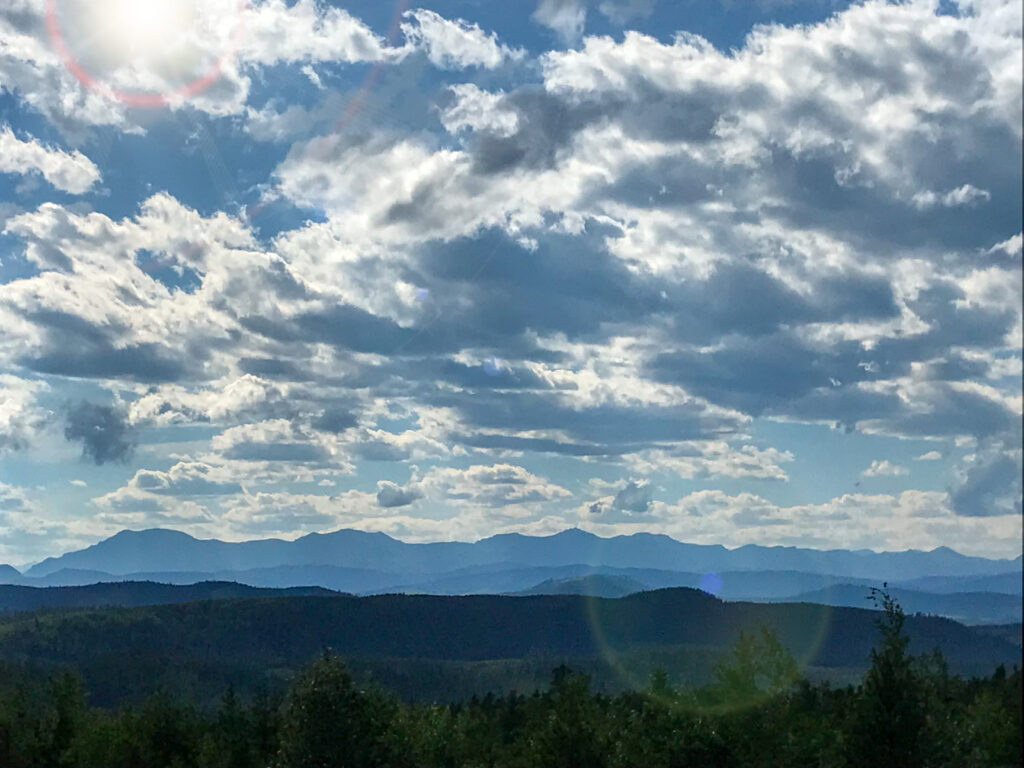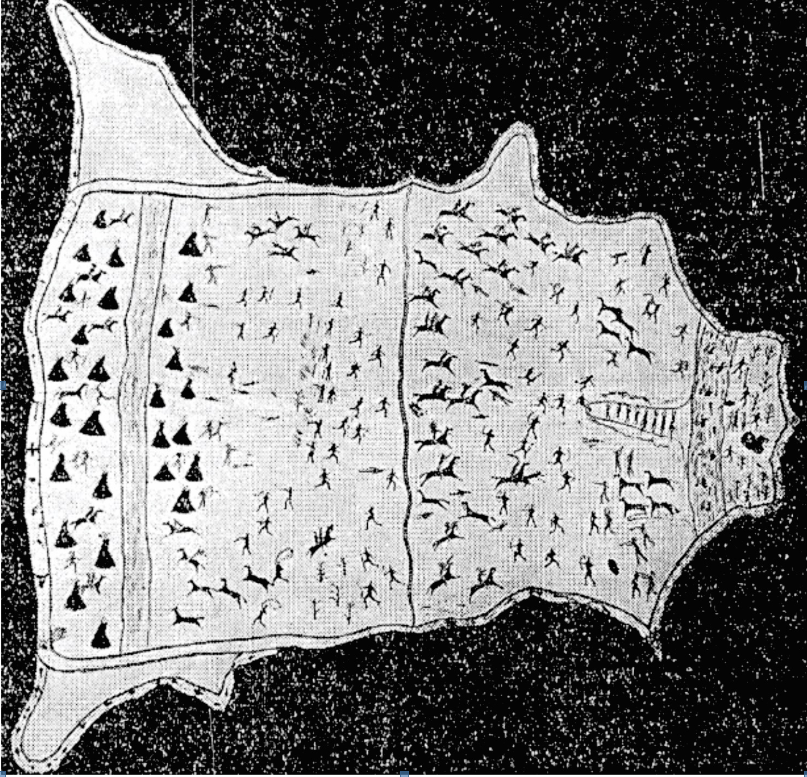Post Category : Archaeonerdism Local Archaeology
Glacial Lakes around Lesser Slave Lake
Where we find archaeological sites in the province is often strongly tied to the physical environment. We look for the different physical characteristics such as distance to water and if an area is high and dry. These features are indicators, which tell us that there could be an archaeological site in the area. This approach to finding archaeological sites is useful, but there are problems when we start considering how the landscape might change over time. The top of a hill set really far from a stream today, might have been beach front property in the past.
This is important in regards to our work on the shores of Lesser Slave Lake in Alberta. The Lesser Slave Lake basin has undergone extensive changes over the past 13,000 years, largely due to the retreating front of the glacial ice sheets at the end of the last ice age, and the incision and creation of the modern river valleys. Understanding how this environment changed over time is useful for identifying new archaeological sites in the region, as it helps us to understand how First Nations used the landscape in the past. Older archaeological sites may be on ancient beaches and meltwater channels that don’t look like they would be suitable for a campsite today, but were actually prime real estate 10, 000 years ago. These sites could be missed during an archaeological review and survey based on the modern landscape, so it is important that we understand how an area has changed, so that we can better predict where archaeological sites are going to be.
Glacial History of Slave Lake
The development of proglacial lakes in the Lesser Slave Lake region occurred during the end of the last ice age and the retreat of the ice front between 13,500 and 10,700 years ago. This created a complicated and dynamic paleo-landscape, where the regional retreats and readvances of the Laurentide ice sheet disrupted the local drainage systems, and created massive lakes lying along the ice front. The largest of these lakes in Alberta included Glacial Lake Peace, which ultimately covered an area from Charlie Lake in British Columbia, to Lesser Slave Lake in the east, and up to High Level in northern Alberta.
Another major proglacial water body was Glacial Lake Edmonton, which formed as ice blocked natural drainage down the Athabasca River. These proglacial lakes were time-transgressive, meaning that they represented multiple water bodies whose boundaries and volumes changed drastically over centuries. The shorelines of Glacial Lake Peace and Edmonton changed as the ice front retreated north, opening new drainage outlets for the fast-flowing meltwater to create deep and wide channels. The retreating ice front and these new drainage outlets also lowered the water levels in these lakes, which created a staggered series of topographic features representing the previous stable levels.
It is difficult to accurately recreate every lake level that occurred during this era, but we can provide snapshots that show how the environment would have looked at certain stable periods of deglaciation. Dating these snapshots is extremely difficult as only a few radiocarbon dates are available for some of the periods. Generally, it is believed that the deglaciation occurred over the Lesser Slave Lake basin over a 2,000 year period, starting around 13, 500 years ago and continuing to around 10, 700 years ago.

The earliest evidence of a proglacial lake in the Lesser Slave Lake area can be found in the Swan Hills, south of the lake basin. The front of the Laurentide Ice Sheet had retreated northwards off the south slopes of the Swan Hills and on to the north side, but not as far as Lesser Slave Lake. This ice front hanging onto the Swan Hills uplands blocked the natural northerly drainage in the Driftpile, Swan, Sawridge, and Otauwau river valleys, causing these valley to fill up with water. As the ice front continued to move further north, new drainage outlets opened for these small proglacial lakes, but generally the water flowed east across the Swan Hills towards the Athabasca River valley. The highest and earliest evidence of a proglacial lake during this phase can be found in the Driftwood River Valley at 855 m asl. It is believed that this phase occurred some point before 13, 500 years ago.

Once the ice sheet moved down off the Swan Hills, it opened up the Lesser Slave Lake basin and Athabasca River valley, allowing water to fill these low lying areas. This period is known as the Clayhurst Phase. During this period the proglacial lake level decreased from 680 to 640 m asl, as the drainage outlets for the lake incised into their valleys and retreating ice opened new outlets. Generally the water in the Lesser Slave Lake area flowed towards the southeast, as the northwards drainage of the Peace River Valley was still blocked, and there was a large lobe of glacial ice that reached as far south as Tawatinaw, Alberta. The majority of strandlines that we can see around Lesser Slave Lake formed during this period, sometime between 13, 500 and 10, 700 years ago. However, all of this change may have occurred over only a 300 year period, based on glacial lake deposits near Charlie Lake Cave in British Columbia.


The final glacial lake stage in the Lesser Slave Lake basin is known as the Indian Creek Phase. During this period, the ice front had moved north from the hills on the north side of Lesser Slave Lake, up the Peace River valley, to the Keg River south of High Level. Backed up to a level around 590 m asl and unable to drain northwards, Glacial Lake Peace actually was flowing eastwards into Lesser Slave Lake. The water carved a deep wide meltwater channel at the Iroquois Lakes near High Prairie. The proglacial lake in the Lesser Slave Lake basin had largely drained away at this point, but this east flowing outlet from Glacial Lake Peace raised water levels in the basin, flooding the low lying flats around the lake. This final glacial lake phase is thought to have occurred around 10, 700 years ago.

As the glacial ice front continued to move further north, the outlet of Glacial Lake Peace shifted from Lesser Slave Lake to other drainage systems further north, and the level of Lesser Slave Lake began to recede. However after deglaciation, Lesser Slave Lake still maintained a higher-than-historic water level. There were several phases spanning the
following 10,000 years after the Ice Age, when the lake fluctuated between 586 m asl and the current lake level of 575 m asl. This changing lake level flooded and drained the low-lying flats around the lake. The highest and oldest phase for what would become the modern Lesser Slave Lake is known as the Poplar Lane Phase at 586 m asl. The lake stayed at this level between 9,000 and 7,000 years ago. The later fluctuations in lake level correlate to periods of warm/dry and cool/wetter global climatic conditions. Also, as the Lesser Slave River and the Athabasca River cut deeper into their valleys, the water in Lesser Slave Lake would have dropped.

This article is a continuation of a previous post on a poster presentation for the Canadian Archaeological Association 2016 Conference in Whitehorse, Yukon. If you are interested in a more technical discussion of proglacial lakes and predictive modeling or would like a digital copy of the submitted posters, please contact us below.



